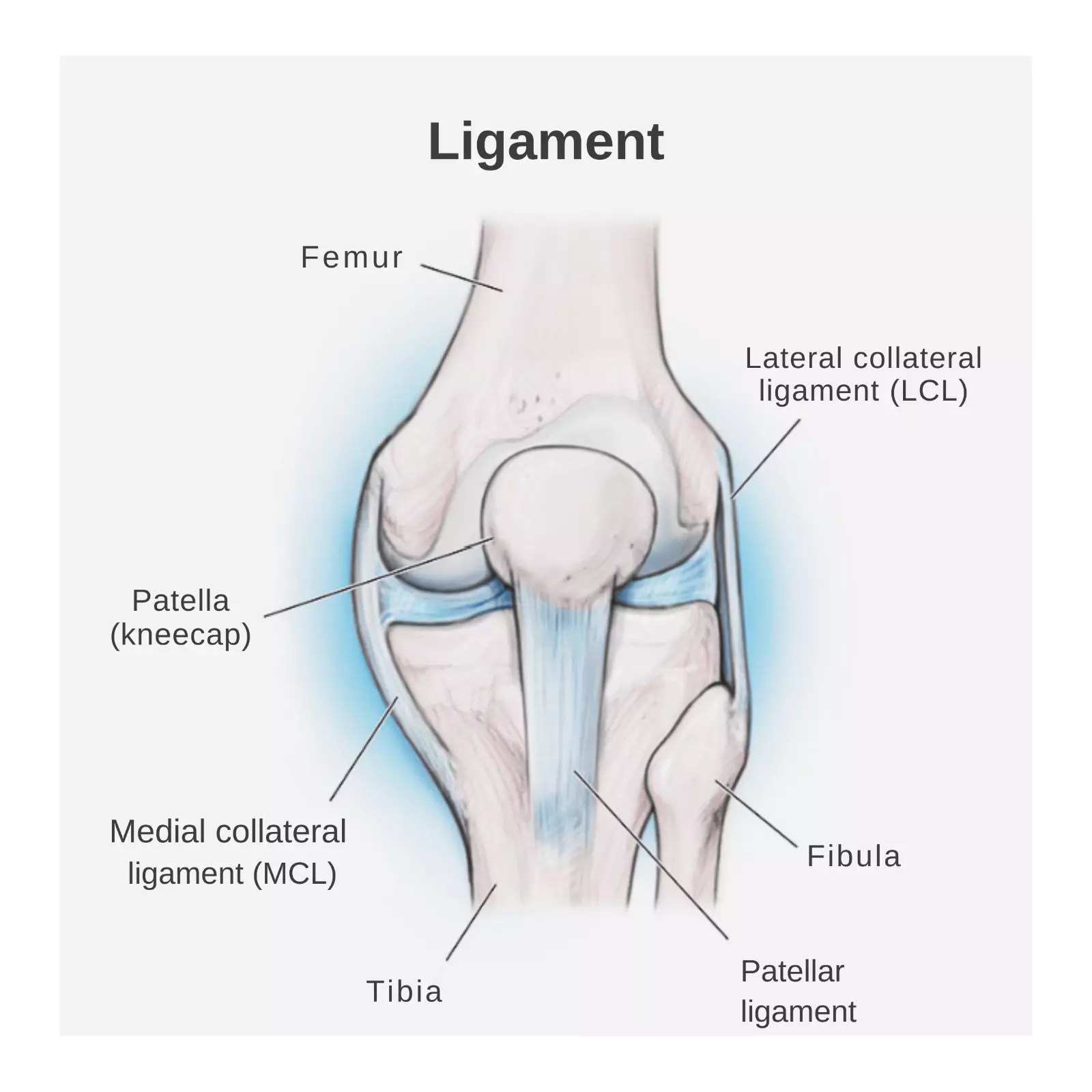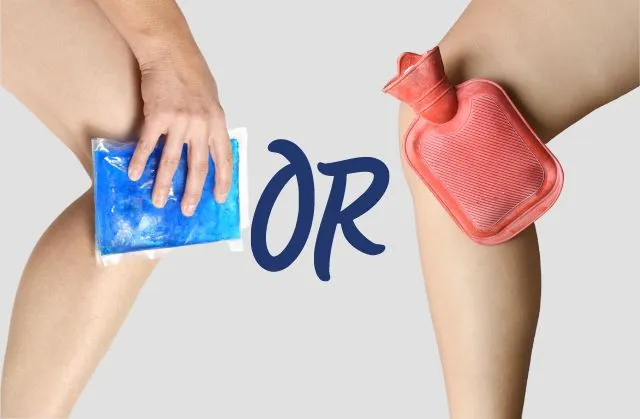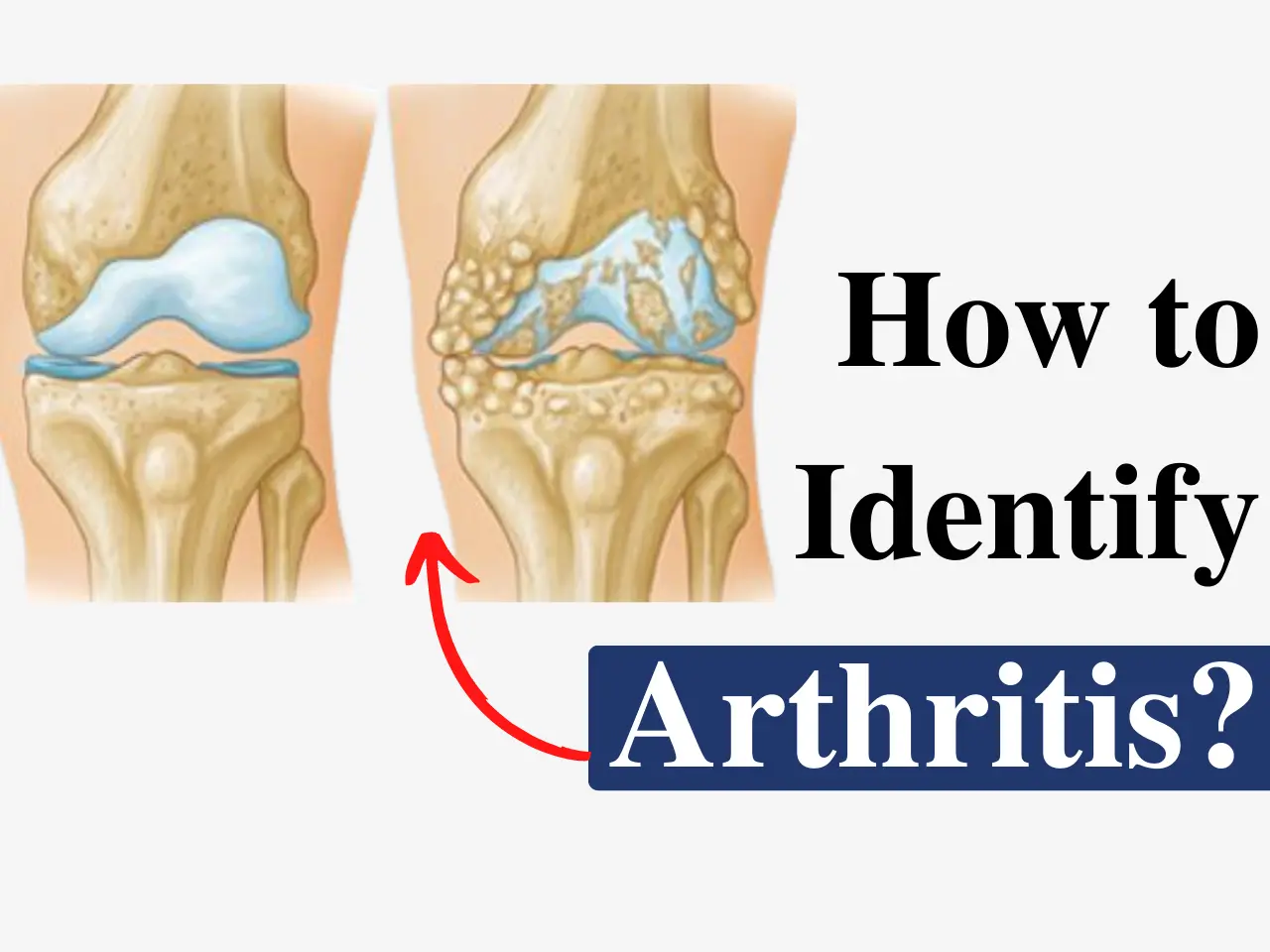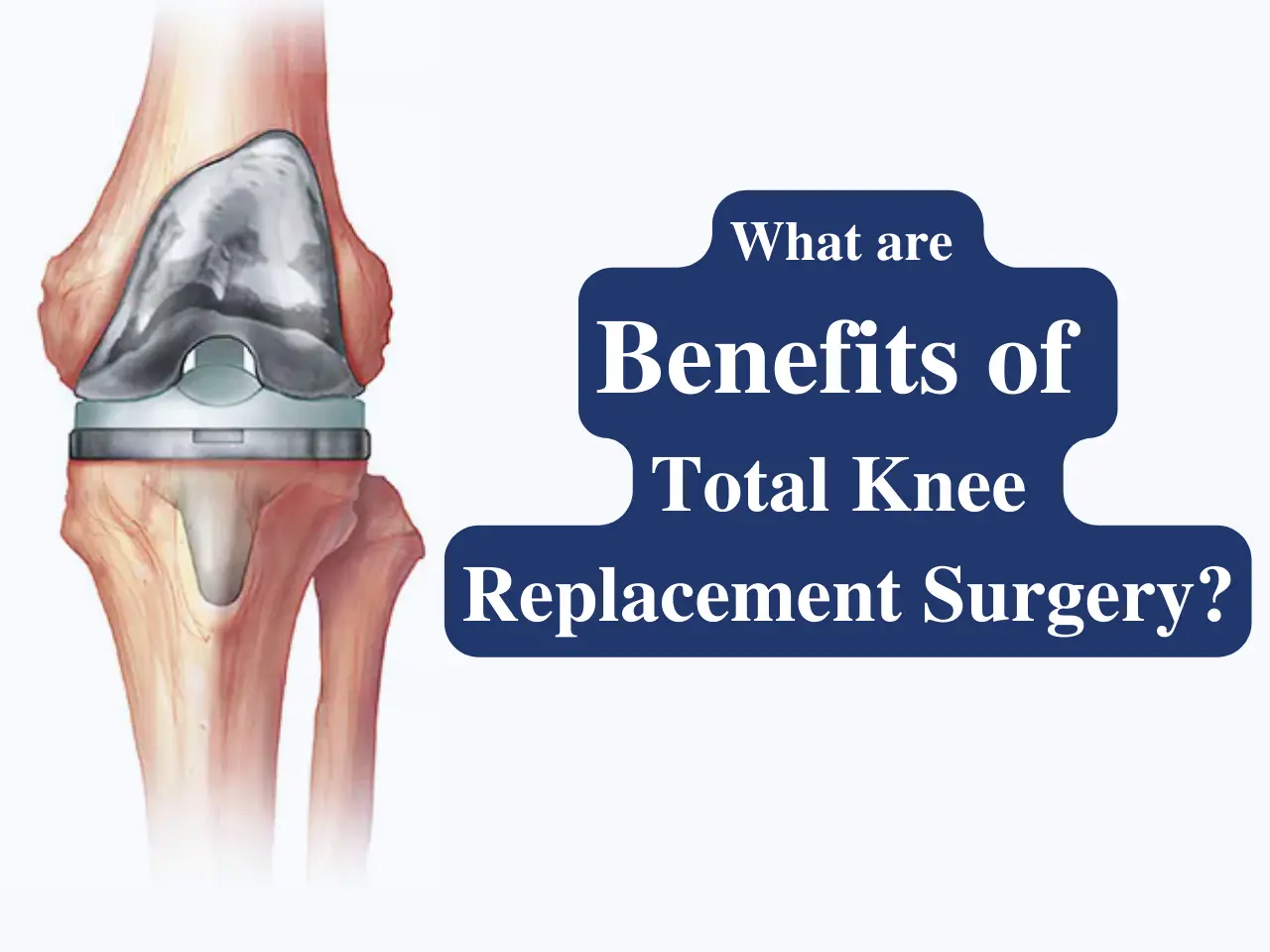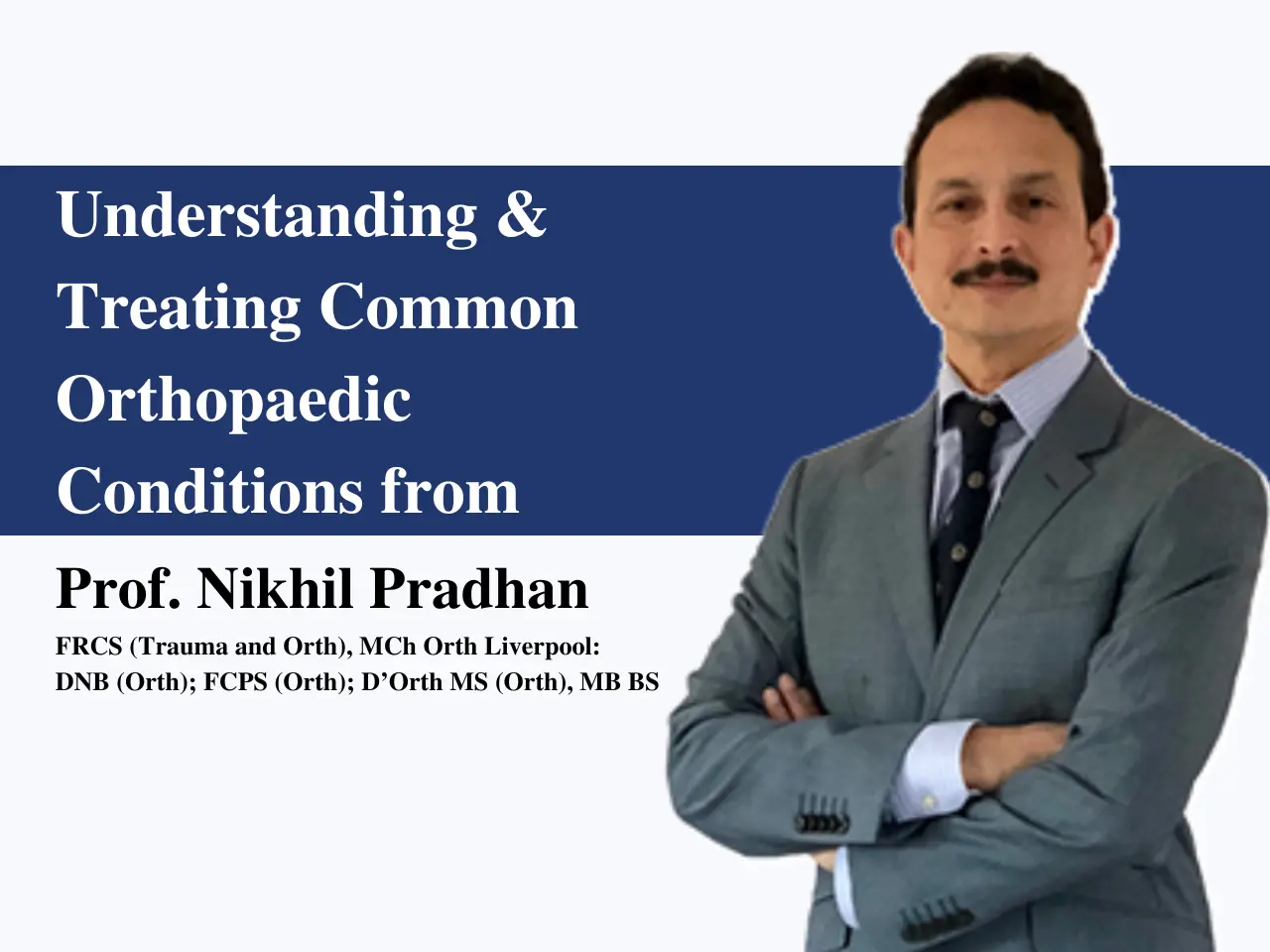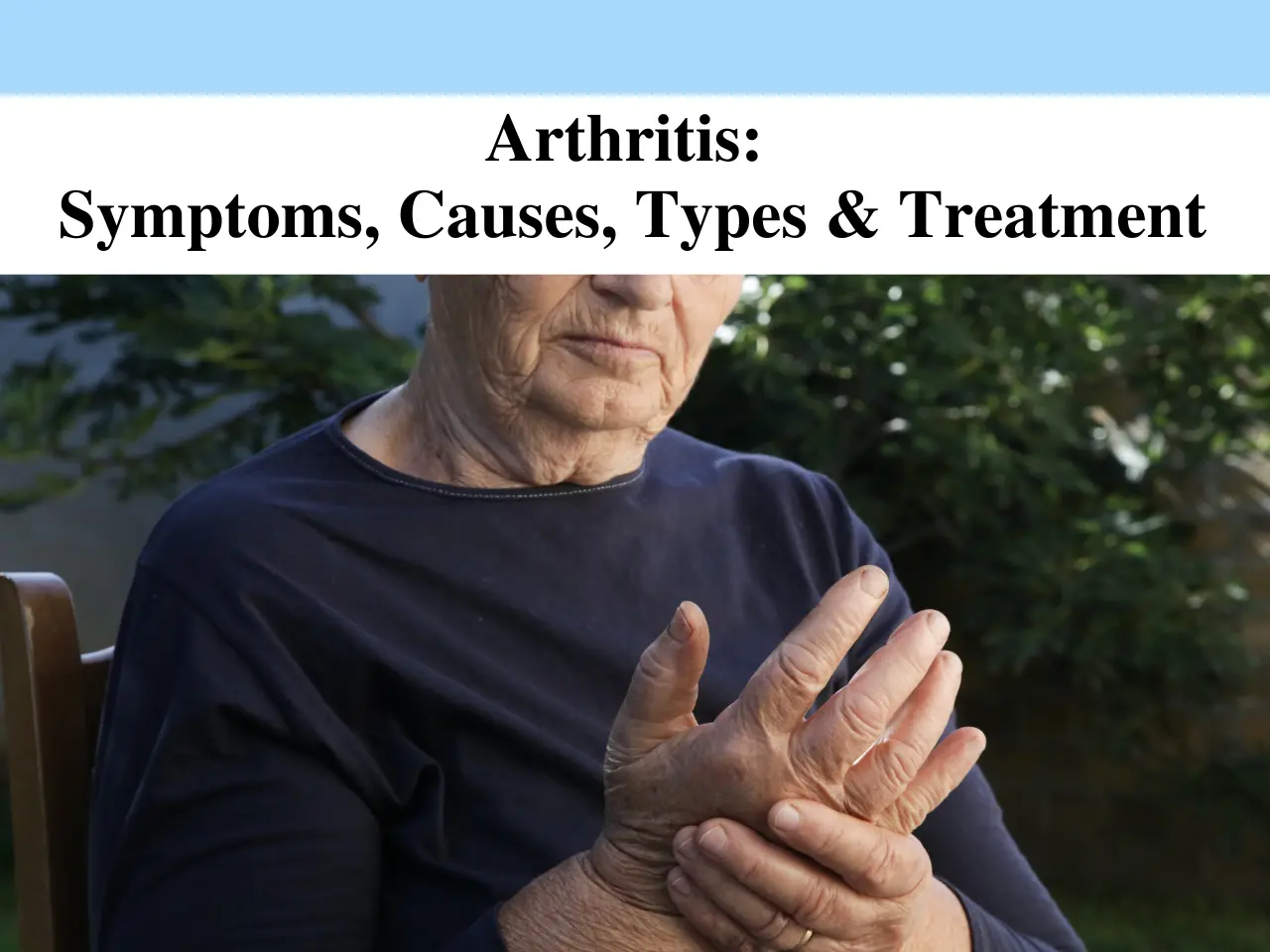Ligament sprains are one of the most common joint injuries, affecting everyone from professional athletes to everyday individuals.
They can happen during sports, exercise, or even a simple misstep. While some sprains heal quickly, others require months of treatment and rehabilitation.
Understanding the difference between a high-grade ligament sprain vs low grade can help you recognise when to rest at home and also when to seek urgent medical attention.
As a leading total knee replacement surgeon in Cheshire, Mr. Nikhil Pradhan has treated a wide range of patients – from young adults to elderly individuals and professional sportspersons – and has extensive experience in managing ligament injuries effectively.
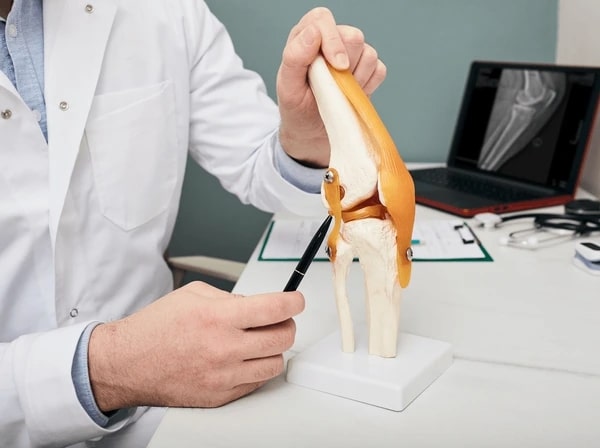
Understanding Ligament Sprains
What is a Ligament?
Ligaments are tough, fibrous bands that connect bones and stabilise joints. A sprain occurs when these ligaments are stretched beyond their normal capacity, leading to microscopic tears or even complete rupture. This can happen due to:
- Sports injuries (football, rugby, basketball, etc.)
- Sudden twisting movements
- Falls or accidents
- Overstretching during physical activity
Ligament Sprain Grading System
Sprains are classified into three grades depending on severity:
- Grade 1 (Low Grade) – Mild stretching or tiny tears in the ligament fibres.
- Grade 2 (Moderate) – Partial tear causing more pain and instability.
- Grade 3 (High Grade) – Complete ligament rupture, leading to significant functional loss.
This classification is crucial in understanding the difference between grade 1 and grade 3 sprain and how treatment varies.
Low-Grade Ligament Sprains
What is a Low-Grade Ligament Sprain?
A low-grade (Grade 1) sprain involves mild damage to the ligament fibres without complete tearing. The joint remains stable, but there may be slight discomfort.
Low Grade Ligament Sprain Symptoms
- Mild pain and tenderness around the joint
- Slight swelling
- Minimal or no bruising
- Mild stiffness, but you can still move the joint
- Ability to bear weight with little discomfort
Healing & Recovery
- Typical grade 1 vs grade 3 ligament sprain healing time for low-grade injuries is around 1–3 weeks.
- Home care (RICE method):
- Rest the affected joint
- Ice to reduce swelling
- Compression using an elastic bandage
- Elevation to decrease fluid buildup
- Gentle physiotherapy can help restore mobility and prevent long-term stiffness.
What is a High-Grade Sprain?
A high-grade (Grade 3) sprain involves a complete tear of the ligament. This often results from major sports injuries, sudden falls, or high-impact trauma.
High Grade Sprain Signs and Treatment
Symptoms include:
- Severe pain immediately after injury
- Significant swelling within hours
- Extensive bruising
- Audible “pop” sound at the time of injury
- Marked instability in the joint
- Inability to bear weight or move the joint normally
Treatment options:
- Immobilisation using braces or splints
- Physiotherapy to restore strength and flexibility
- Surgical repair or reconstruction in severe cases, especially for athletes or highly active individuals
Recovery & Rehabilitation
- Grade 1 vs grade 3 ligament sprain healing time for high-grade injuries can be 3–6 months or longer.
- Rehabilitation is essential to regain stability and prevent future injuries.
- Under the guidance of an orthopaedic specialist like Mr. Nikhil Pradhan, recovery plans are tailored for optimal results.
High Grade Ligament Sprain vs Low Grade – Key Differences
|
Factor |
Low Grade (Grade 1) |
High Grade (Grade 3) |
|
Tear Severity |
Mild stretch |
Complete rupture |
|
Symptoms |
Mild pain, slight swelling |
Severe pain, major swelling |
|
Mobility |
Mostly intact |
Significant loss |
|
Healing Time |
1–3 weeks |
3–6 months |
|
Treatment |
Home care & physio |
Surgery or advanced rehab |
How to Tell if Sprain is Severe?
Seek immediate medical help if you experience:
- Inability to move or bear weight on the joint
- Rapid, severe swelling within hours
- A feeling that the joint is “giving way”
- Large bruises spreading beyond the injury site
- Deformity around the joint area
When to Seek Medical Help?
Even a seemingly mild sprain can worsen without proper care. You should consult a specialist if:
- Pain and swelling persist beyond a few days
- You hear a popping sound during injury
- The joint feels unstable or locks up
- You’re an athlete or have physically demanding work
Mr. Nikhil Pradhan uses advanced diagnostic tools like MRI and ultrasound, along with a detailed physical examination, to identify the severity of your ligament injury and recommend the most effective treatment plan.
Preventing Ligament Sprains
- Always warm up and stretch before physical activity
- Strengthen muscles around joints for better support
- Wear supportive footwear
- Avoid sudden, high-impact movements without proper conditioning
Conclusion
Knowing the difference between a high grade ligament sprain vs low grade can make a big difference in your recovery outcome. While low-grade sprains often heal with rest and simple care, high-grade sprains require prompt medical attention and structured rehabilitation.
If you’re unsure how to tell if a sprain is severe, it’s always better to err on the side of caution.
For expert diagnosis and treatment in Cheshire, Book a consultation with Mr. Nikhil Pradhan and ensure your recovery is in the safest hands.

